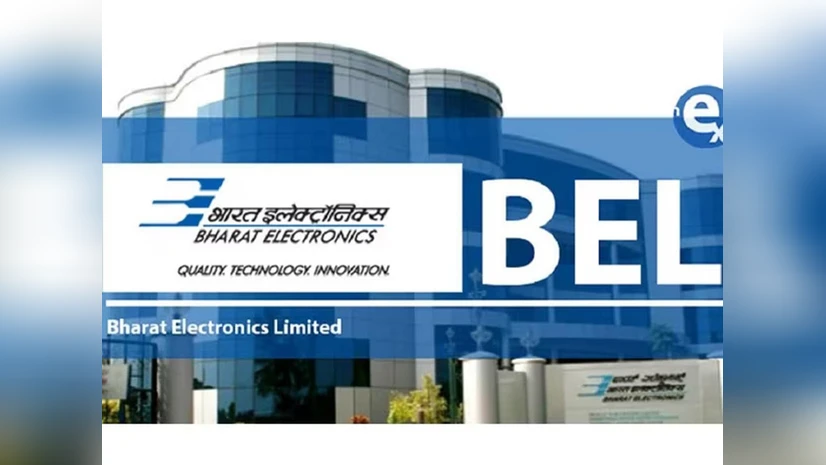Hey, like this? Why not share it with a buddy?

India’s MSME ecosystem has unique features that call for a customized approach. There is a growing consensus that India must develop its own basic AI model to address local challenges and opportunities.
By Ateesh Singh:
Adoption of digital tools and processes has created a significant impact on the MSME sector, transforming how businesses operate and thrive. This rapid digital transformation, accelerated by the panemic, has led many businesses to adopt digital tools and platforms to survive. For MSMEs, this shift has proven to be a game-changer, enabling them to improve operational efficiency, access new markets and enhance competitiveness. According to a recent survey by ICRIER, 90% of MSMEs reported growth in sales and profit margins after integrating e-commerce into their operations. Additionally, 50% of these integrated firms hired new employees’ post-integration, with nearly 75% of them hiring women employees. Furthermore, 30% of integrated firms (firms that have adopted e-commerce) found e-commerce beneficial for raising collateral-free loans. About 16% of all surveyed enterprises export their products and 93% of the export-oriented, integrated firms rely on e-commerce platforms to reach international markets. Even in the lending landscape, as per a recent SIDBI report, 18% of MSMEs surveyed have availed credit through digital lending platforms. In addition to traditional channels, MSMEs are also availing credit through alternate financing channels such as TReDS and Fintech, with both offering their services and products through the digital medium.
However, despite these advancements, traditional challenges such as limited access to finance, inadequate infrastructure and regulatory hurdles still persist. It is now important now to go to the next level of innovation, where artificial intelligence (AI) can play an important role. Today, AI-powered tools and solutions – From machine learning to intelligent automation – are ready to transform every aspect of MSME operations.
At the present moment, the Indian MSME sector has begun embracing AI in various fields, although at a limited scale. For example, local retailers have taken advantage of AI-powered e-commerce analytics to increase sales, whereas service sector enterprises such as travel agencies have implemented chatbots for customer service (promoting satisfaction and reducing the cost of manpower). However, to fully exploit AI’s capacity, more efforts are required at both the enterprise and administration levels.
Nations globally are focusing on fostering innovation, enhancing economic productivity and ensuring ethical AI implementation. They are adopting tailored approaches based on their distinct strengths and priorities, contributing to a diverse global AI landscape.
India’s MSME ecosystem has unique features that call for a customized approach. There is a growing consensus that India must develop its own basic AI model to address local challenges and opportunities. It outlines the strategic importance of indigenous AI abilities. It is important that the AI model developed in-house, conforms to Indian MSME and provides the following characteristics:
- Diverse Languages and Local Context: India’s MSMEs operate in multiple languages (Hindi, Tamil, Marathi, Bengali, Konkani etc.) and in culturally varied markets. It is important for the India model to understand local market nuances – from rural supply chains to cultural consumer preferences – that foreign AI models might miss. For instance, a chatbot or decision support AI that “speaks” the language of a small toy maker in Tamil Nadu or a handicraft seller in Uttar Pradesh could drastically improve technology adoption. Recognizing this need, Indian startups are already building AI models focused on local languages. This sort of localization – both linguistic and contextual – is essential for MSMEs across India’s diverse regions to leverage AI effectively.
- Affordability and Accessibility: The major AI models from abroad often come with high membership fees or pay-use costs, excluding them from access to small businesses. For MSMEs of India, cost is a decisive factor. A domestically developed AI ecosystem can take advantage of the scale and government support to provide subsidized rates or free tools for MSMEs. By investing in its own models, India can ensure that the AI solutions are available in the smallest grocery stores or workshops at a minimum cost.
- Customization to MSME Needs: MSMEs face distinct operational challenges, whether it’s managing informal workflows, irregular data records, or constrained resources. An Indian AI model can be explicitly trained on MSME-specific data (e.g. local supply chain patterns, vernacular customer feedback, regional market prices) to provide more relevant insights. For example, an AI forecasting tool tuned to Indian consumption patterns could help a small textile manufacturer in Surat predict demand for fabrics during festival seasons, far better than a generic global model. By developing our own AI, India can align the technology’s capabilities with the priority problems of our MSMEs (such as access to finance, efficient production, local marketing), instead of waiting for global players to notice these niche needs.
- Strategic Autonomy and Data Sovereignty: Relying solely on foreign AI platforms poses long-term risks. Proprietary models controlled by overseas entities may impose restrictive licenses, change pricing suddenly, or even be subject to geopolitical constraints. Developing an indigenous AI backbone ensures India retains sovereign control over critical tech infrastructure that MSMEs will increasingly depend on. The data generated by Indian businesses and consumers is a strategic asset – an Indian AI model can be governed under India’s data protection frameworks, ensuring that sensitive business data (like consumer behavior or product designs) does not need to leave the country for processing.
Considering these factors, the case for an India-specific AI model – one tuned to the MSME ecosystem – is compelling. It would combine language localization, cost accessibility, domain customization, and strategic autonomy. Such a model can act as a digital empowerment engine for millions of small businesses, much like how the various India Stacks (AADHAAR, UPI, etc.) did for fintech inclusion. Given the current state of India’s MSME sector and AI capabilities, and taking notes from the US and Chinese models, a hybrid strategy is the most prudent. There is latent demand (a strong interest in AI’s benefits) as well as clear supply potential (talented engineers, startups, and initiatives like the forthcoming India AI compute facility). A hybrid model ensures we don’t overshoot on one at the expense of the other. For example, the Government’s push to develop an Indian large language model (LLM) with 18,000 GPUs (supply) will be most effective if paired with programs that integrate such AI models into MSME-friendly applications and make them accessible via industry associations, MSME portals, etc. (demand). Likewise, efforts to train MSME owners in AI should coincide with the availability of easy-to-use, Indian-language AI tools; otherwise, we risk enthusiasm turning into frustration. By adopting a hybrid approach, India can create a self-sustaining ecosystem where MSMEs continuously feed the innovation cycle and benefit from it. This balanced strategy would combine the best of the US emphasis on innovation capacity with the Chinese emphasis on broad accessibility.
Local Indian MSMEs, with their traditional challenges and limited resources, can greatly benefit from the integration of AI into their operations and overcoming their traditional challenges. These enterprises have struggled to secure financing due to limited credit histories and other documentation required for loan processing and approvals. AI can step in here and support by leveraging alternative data sources such as transaction histories, social media activity and utility payments to assess creditworthiness. This approach will allow financial institutions to make more informed lending decisions, thereby increasing the availability of credit to MSMEs. AI-powered platforms can also automate the loan application process, thereby significantly reducing the time and effort required. Further, AI tools can offer MSMEs customized insights into market trends and consumer behavior. By analyzing huge quantum of data, AI can help enterprises identify new markets, formulate marketing strategies and communication, and tailor their products and services to meet customer needs more effectively. AI can also assist in designing websites that appeal to MSME target customers by considering various parameters such as user preferences, browsing patterns, and demographic information.
With respect to day-to-day operations, tasks such as inventory management, customer service and accounting can be automated using AI, freeing up valuable time for business owners to focus on strategic activities. This nature of automation not only improves efficiency but also reduces operational costs. With regards to adopting new techniques, MSMEs face multiple barriers such as high cost and low technical expertise. This compels them to operate on second-hand or even third-hand machines and technology. AI can help bridge this gap by providing cost-effective and user-friendly solutions and also provide information on new and emerging technologies based on their sector, budget and current infrastructure. The role of the administration is also important in realizing these AI-powered opportunities. They have a treasure of data, which can be exploited to support MSMEs in overcoming traditional challenges such as credit, market and technology. One of the most valuable data sets is the Udyam registration data, which provides detailed information about MSMEs across the country. This data includes information like enterprise type, investment in plant and machinery, turnover and number of employees. Taking advantage of this data, AI models can be developed to assess the credit, to streamline regulatory compliance and identify development opportunities for MSMEs.
Further, the administration can make available marketing and e-commerce data from platforms such as GeM, MSME Mart and ODOP Mart, Open Network for Digital Commerce (ONDC) and various Central and State market portals. This data can help AI models analyze market trends and consumer behavior to help MSMEs customize their pricing, stock keeping units (SKUs), demand forecast and product offerings. This level of adaptation can increase the productivity and competitiveness of MSMEs in both domestic and international markets. Another important data set comes from the banking sector, including the number of accounts, the amount and value of transactions made through the loan and UPI. By analyzing this data, AI can help financial institutions better understand the credit requirements of MSMEs and offer financial products. For example, AI may analyze the transaction pattern to identify MSME that may otherwise be ignored by traditional credit scoring methods. As we navigate this transformative journey, let us ask ourselves: How can we ensure that the benefits of AI reach every corner of our diverse nation? How can we balance innovation with moral thoughts and inclusion? Answers to these questions will shape the future of India’s MSME region and in detail, the future of our economy. The time to work is now and the path we choose will determine whether AI becomes a tool for broader prosperity or a lapse opportunity.
Source : https://www.financialexpress.com/business/sme-why-india-needs-a-homegrown-ai-model-for-its-msme-sector-3858792/#:~:text=A%20domestically%20developed%20AI%20ecosystem,workshops%20at%20a%20minimum%20cost.
Related Posts
SEARCH SME E-News
RECENT POST
- Amazing Update: RBI Makes Loans Easier for People with Low CIBIL Scores
- Industry seeks Finance Ministry assurance on GST rate cuts; warns of duty inversion risks
- Finance Ministry plans consultations with India Inc. to boost job creation amid slowing wage growth
- Big PMO meet tomorrow as Trump’s 50% tariffs set to come into force: Sources
- SMEtalks on “BUILDING LEADERS: Transform Ideas into Breakthroughs”
Categories
- Achievements
- Banking & Finance
- Branding & Marketing
- Business Ethics & Culture
- Business talk
- Business Tycoons
- Capital Market
- Corporate Story
- Davos
- Economy
- Emerging Market
- Entrepreneurial Leadership Dialogue
- events
- Exports
- Grievances
- Growth
- Impact on Business
- Import
- India Growth Story
- Industry
- Innovation and Invention
- Innovative Ideas
- International Affairs
- International Trade
- jobs career
- Manufacturing
- Meeting
- MSME
- Others
- Packaging
- Pharma
- Policies & Schemes
- Regulatory Change
- Skill Development
- SME Talks
- Start-up
- Swot Analysis
- Tax
- Technology & Research
- Textiles
- Travel
- Uncategorized
- Viksit Bharat 2047- Strategies, Contribution, Initiatives and Efforts
- Women Entrepreneurs
- World Economic Forum




